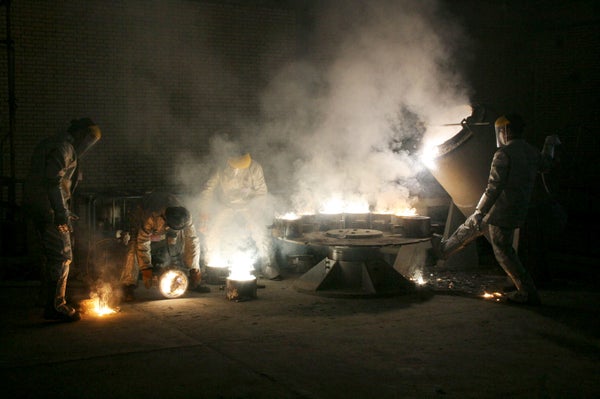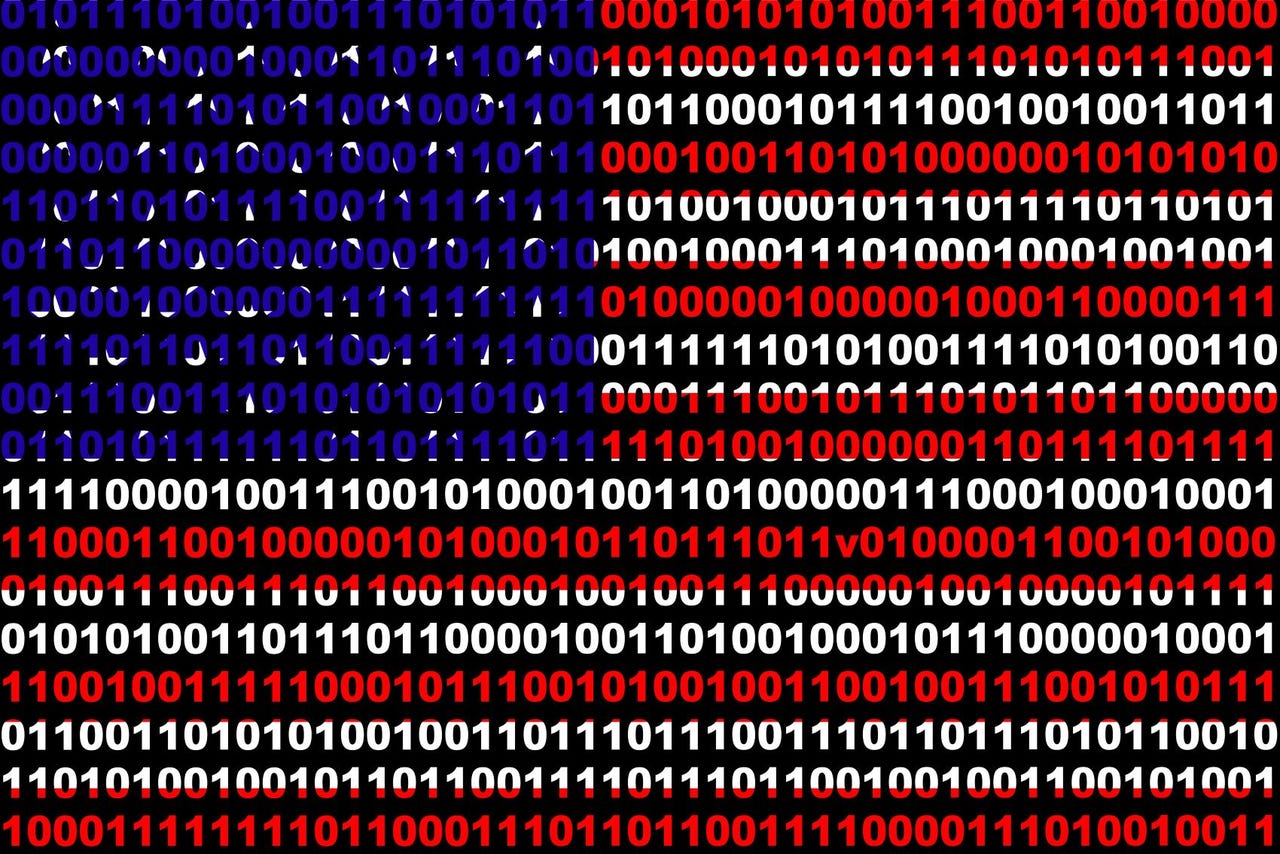Scientists Detect Unusual Airborne Toxin in the United States for the First Time
Researchers unexpectedly discovered toxic airborne pollutants in Oklahoma. The image above depicts a field in Oklahoma. Credit: Shutterstock
University of Colorado Boulder researchers made the first-ever airborne detection of Medium Chain Chlorinated Paraffinsin the Western Hemisphere.
Sometimes, scientific research feels a lot like solving a mystery. Scientists head into the field with a clear goal and a solid hypothesis, but then the data reveals something surprising. That’s when the real detective work begins.
This is exactly what happened to a team from the University of Colorado Boulder during a recent field study in rural Oklahoma. They were using a state-of-the-art instrument to track how tiny particles form and grow in the air. But instead of just collecting expected data, they uncovered something completely new: the first-ever airborne detection of Medium Chain Chlorinated Paraffins, a kind of toxic organic pollutant, in the Western Hemisphere. The teams findings were published in ACS Environmental Au.
“It’s very exciting as a scientist to find something unexpected like this that we weren’t looking for,” said Daniel Katz, CU Boulder chemistry PhD student and lead author of the study. “We’re starting to learn more about this toxic, organic pollutant that we know is out there, and which we need to understand better.”
MCCPs are currently under consideration for regulation by the Stockholm Convention, a global treaty to protect human health from long-standing and widespread chemicals. While the toxic pollutants have been measured in Antarctica and Asia, researchers haven’t been sure how to document them in the Western Hemisphere’s atmosphere until now.
From Wastewater to Farmlands
MCCPs are used in fluids for metal working and in the construction of PVC and textiles. They are often found in wastewater and as a result, can end up in biosolid fertilizer, also called sewage sludge, which is created when liquid is removed from wastewater in a treatment plant. In Oklahoma, researchers suspect the MCCPs they identified came from biosolid fertilizer in the fields near where they set up their instrument.
“When sewage sludges are spread across the fields, those toxic compounds could be released into the air,” Katz said. “We can’t show directly that that’s happening, but we think it’s a reasonable way that they could be winding up in the air. Sewage sludge fertilizers have been shown to release similar compounds.”
MCCPs little cousins, Short Chain Chlorinated Paraffins, are currently regulated by the Stockholm Convention, and since 2009, by the EPA here in the United States. Regulation came after studies found the toxic pollutants, which travel far and last a long time in the atmosphere, were harmful to human health. But researchers hypothesize that the regulation of SCCPs may have increased MCCPs in the environment.
“We always have these unintended consequences of regulation, where you regulate something, and then there’s still a need for the products that those were in,” said Ellie Browne, CU Boulder chemistry professor, CIRES Fellow, and co-author of the study. “So they get replaced by something.”
Measurement of aerosols led to a new and surprising discovery
Using a nitrate chemical ionization mass spectrometer, which allows scientists to identify chemical compounds in the air, the team measured air at the agricultural site 24 hours a day for one month. As Katz cataloged the data, he documented the different isotopic patterns in the compounds. The compounds measured by the team had distinct patterns, and he noticed new patterns that he immediately identified as different from the known chemical compounds. With some additional research, he identified them as chlorinated paraffins found in MCCPs.
Katz says the makeup of MCCPs are similar to PFAS, long-lasting toxic chemicals that break down slowly over time. Known as “forever chemicals,” their presence in soils recently led the Oklahoma Senate to ban biosolid fertilizer.
Now that researchers know how to measure MCCPs, the next step might be to measure the pollutants at different times throughout the year to understand how levels change each season. Many unknowns surrounding MCCPs remain, and there’s much more to learn about their environmental impacts.
“We identified them, but we still don’t know exactly what they do when they are in the atmosphere, and they need to be investigated further,” Katz said. “I think it’s important that we continue to have governmental agencies that are capable of evaluating the science and regulating these chemicals as necessary for public health and safety.”
Reference: “Real-Time Measurements of Gas-Phase Medium-Chain Chlorinated Paraffins Reveal Daily Changes in Gas-Particle Partitioning Controlled by Ambient Temperature” by Daniel John Katz, Bri Dobson, Mitchell Alton, Harald Stark, Douglas R. Worsnop, Manjula R. Canagaratna and Eleanor C. Browne, 5 June 2025, ACS Environmental Au.
DOI: 10.1021/acsenvironau.5c00038
Never miss a breakthrough: Join the SciTechDaily newsletter.
#scientists #detect #unusual #airborne #toxinScientists Detect Unusual Airborne Toxin in the United States for the First Time
Researchers unexpectedly discovered toxic airborne pollutants in Oklahoma. The image above depicts a field in Oklahoma. Credit: Shutterstock
University of Colorado Boulder researchers made the first-ever airborne detection of Medium Chain Chlorinated Paraffinsin the Western Hemisphere.
Sometimes, scientific research feels a lot like solving a mystery. Scientists head into the field with a clear goal and a solid hypothesis, but then the data reveals something surprising. That’s when the real detective work begins.
This is exactly what happened to a team from the University of Colorado Boulder during a recent field study in rural Oklahoma. They were using a state-of-the-art instrument to track how tiny particles form and grow in the air. But instead of just collecting expected data, they uncovered something completely new: the first-ever airborne detection of Medium Chain Chlorinated Paraffins, a kind of toxic organic pollutant, in the Western Hemisphere. The teams findings were published in ACS Environmental Au.
“It’s very exciting as a scientist to find something unexpected like this that we weren’t looking for,” said Daniel Katz, CU Boulder chemistry PhD student and lead author of the study. “We’re starting to learn more about this toxic, organic pollutant that we know is out there, and which we need to understand better.”
MCCPs are currently under consideration for regulation by the Stockholm Convention, a global treaty to protect human health from long-standing and widespread chemicals. While the toxic pollutants have been measured in Antarctica and Asia, researchers haven’t been sure how to document them in the Western Hemisphere’s atmosphere until now.
From Wastewater to Farmlands
MCCPs are used in fluids for metal working and in the construction of PVC and textiles. They are often found in wastewater and as a result, can end up in biosolid fertilizer, also called sewage sludge, which is created when liquid is removed from wastewater in a treatment plant. In Oklahoma, researchers suspect the MCCPs they identified came from biosolid fertilizer in the fields near where they set up their instrument.
“When sewage sludges are spread across the fields, those toxic compounds could be released into the air,” Katz said. “We can’t show directly that that’s happening, but we think it’s a reasonable way that they could be winding up in the air. Sewage sludge fertilizers have been shown to release similar compounds.”
MCCPs little cousins, Short Chain Chlorinated Paraffins, are currently regulated by the Stockholm Convention, and since 2009, by the EPA here in the United States. Regulation came after studies found the toxic pollutants, which travel far and last a long time in the atmosphere, were harmful to human health. But researchers hypothesize that the regulation of SCCPs may have increased MCCPs in the environment.
“We always have these unintended consequences of regulation, where you regulate something, and then there’s still a need for the products that those were in,” said Ellie Browne, CU Boulder chemistry professor, CIRES Fellow, and co-author of the study. “So they get replaced by something.”
Measurement of aerosols led to a new and surprising discovery
Using a nitrate chemical ionization mass spectrometer, which allows scientists to identify chemical compounds in the air, the team measured air at the agricultural site 24 hours a day for one month. As Katz cataloged the data, he documented the different isotopic patterns in the compounds. The compounds measured by the team had distinct patterns, and he noticed new patterns that he immediately identified as different from the known chemical compounds. With some additional research, he identified them as chlorinated paraffins found in MCCPs.
Katz says the makeup of MCCPs are similar to PFAS, long-lasting toxic chemicals that break down slowly over time. Known as “forever chemicals,” their presence in soils recently led the Oklahoma Senate to ban biosolid fertilizer.
Now that researchers know how to measure MCCPs, the next step might be to measure the pollutants at different times throughout the year to understand how levels change each season. Many unknowns surrounding MCCPs remain, and there’s much more to learn about their environmental impacts.
“We identified them, but we still don’t know exactly what they do when they are in the atmosphere, and they need to be investigated further,” Katz said. “I think it’s important that we continue to have governmental agencies that are capable of evaluating the science and regulating these chemicals as necessary for public health and safety.”
Reference: “Real-Time Measurements of Gas-Phase Medium-Chain Chlorinated Paraffins Reveal Daily Changes in Gas-Particle Partitioning Controlled by Ambient Temperature” by Daniel John Katz, Bri Dobson, Mitchell Alton, Harald Stark, Douglas R. Worsnop, Manjula R. Canagaratna and Eleanor C. Browne, 5 June 2025, ACS Environmental Au.
DOI: 10.1021/acsenvironau.5c00038
Never miss a breakthrough: Join the SciTechDaily newsletter.
#scientists #detect #unusual #airborne #toxin











